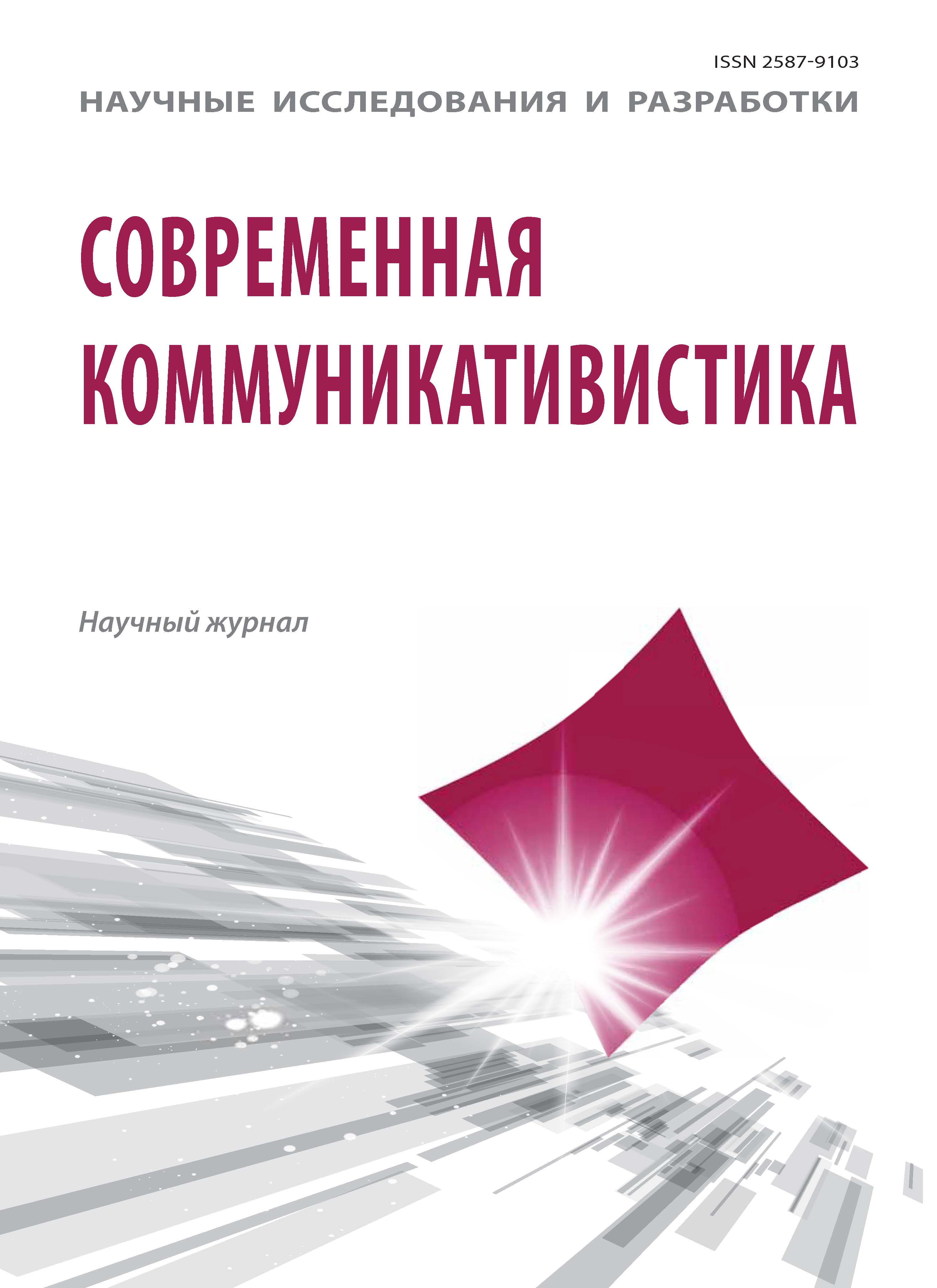Russian Federation
Introduction. Internet communication is one of the most actively developed and still insufficiently developed areas in modern linguistics. Its linguistic features are reflected at all levels of the language system, and, therefore, require additional research, in particular, in the field of occasional ways of word formation. The purpose of this article is to study and systematize the scientific literature on the designated problem, analyze the language material, identify typical word–formation neoplasms characteristic of Internet communication, The medological basis of the study was the works of Galichkina E.N., Goroshko E.I., Ivanov L.Yu., Kolokoltseva T.N., Krongauza M.A., Lutovinova O.V., Mechkovskaya N.B., Ryazantseva T.I., Shchipitsina L.Yu., which predetermined the choice of methods for observing language material and its interpretation. The texts of works of art, websites, forums, and chats were the material for analysis. A review of the scientific literature has shown that one of the striking features of Internet communication is the occasional formation of words from phrases and sentences through holophrasis. This phenomenon is typical, as a rule, for the language of works of art. This was revealed on the material of the story by Yu .Maletsky "Love". The analysis of the speech material of Internet communication confirmed that holophrastic constructions are also characteristic of this speech formation. This allowed us to conclude that the phenomena observed in the language of the Internet are a reflection of the processes in the Russian language. The scientific novelty of the research is as follows: linguistic research in the field of Internet communication will allow to predict the processes in the modern Russian language as a whole. The practical significance of the work lies in the possibility of using the results in the study of active processes in modern Russian.
Internet linguistics, Internet communication, word-formation models, holophrasis, holophrastic constructions, neologisms, occasionalisms
1. Ahrenova N.A. Teoreticheskie osnovy internet-lingvistiki// Filologicheskie nauki. Voprosy teorii i praktiki. № 10 (28). - Tambov: Gramota, 2013. C. 22-26.
2. Goroshko E.I. Lingvistika Interneta: formirovanie disciplinarnoy paradigmy // Zhanry i tipy teksta v nauchnom i mediynom diskurse. Orel: Kartush, 2007. Vyp. 5. S. 223-237.;
3. Goroshko E.I. Sovremennaya internet-kommunikaciya: struktura i osnovnye parametry// Internet-kommunikaciya kak novaya rechevaya formaciya : koll. monografiya / nauch. red. T. N. Kolokol'ceva, O. V. Lutovinova. - M. : FLINTA : Nauka, 2012. - s.29 ].
4. Izotov V.P., Kovyneva I.A. Leksikograficheskoe predstavlenie golofrasticheskih konstrukciy, sozdannyh kombinirovannymi sposobami slovoobrazovaniya. Orel, 2011
5. Il'yasova S.V, Kallistratidis E.V. Yazykovaya igra v «setevyh yazykah» // Internet-kommunikaciya kak novaya rechevaya formaciya : Kollektivnaya monografiya / S. I. Agagyulova, E. N. Galichkina, E. I. Goroshko [i dr.]. - 3-e izdanie, stereotipnoe. - Moskva: Obschestvo s ogranichennoy otvetstvennost'yu "FLINTA", 2016. - s.220-236
6. Kovyneva I.A. Golofrazis kak sposob slovoobrazovaniya v russkom yazyke: avtoref. na soiskanie uch.stepeni kand.filol.n. - Orel, 2007. - 24 s.
7. Kovyneva I.A. Golofrasticheskie konstrukcii v slovaryah avtorskih novoobrazovaniy // Vestnik Severnogo (Arkticheskogo) federal'nogo universiteta. Seriya: Gumanitarnye i social'nye nauki. 2014. №3. URL: https://cyberleninka.ru/article/n/golofrasticheskie-konstruktsii-v-slovaryah-avtorskih-novoobrazovaniy (data obrascheniya: 10.10.2022).
8. Kolokol'ceva T.N. Vvedenie // Internet-kommunikaciya kak novaya rechevaya formaciya : koll. monografiya / nauch. red. T. N. Kolokol'ceva, O. V. Lutovinova. - M. : FLINTA : Nauka, 2012. - 328 s.- s.5
9. Kompanceva L. F. Internet-lingvistika: kognitivno-pragmaticheskiy i lingvokul'turologicheskiy podhody: monografiya. Lugansk: Znanie, 2008. 528 s
10. Lutovinova O.V. Internet kak novaya «ustno-pis'mennaya» sistema kommunikacii. // Izvestiya RGPU im. A. I. Gercena. 2008. №71. URL: https://cyberleninka.ru/article/n/internet-kak-novaya-ustno-pismennaya-sistema-kommunikatsii (data obrascheniya: 10.09.2022)
11. Lutovinova O.V. Lingvokul'torologicheskie harakteristiki virtual'nogo diskursa. - Volgograd: Izd-vo VGPU «Peremena», 2009. - 476s.
12. Lykov A.G. Okkazional'noe slovo kak leksicheskaya edinica rechi // Filologicheskie nauki, 1971, №5, s.77
13. Maleckiy Yu. Lyub'yu// Yu. I. Maleckiy/ Privet iz Kalifornii. - Moskva: Vagrius, 2001. - s.53-211
14. Orfograficheskiy akademicheskiy resurs «AKADEMOS» URL: https://orfo.ruslang.ru/search/word?page=4&query=2022&title_check=1&text_check=2&yo=0i
15. Popova T.V., Raciburskaya L.V., Gugunava D.V. Neologiya i neografiya sovremennogo russkogo yazyka. M.: Flinta: Nauka, 2005. 168 s.
16. Schipicina L.Yu. Komp'yuterno-oposredovannaya kommunikaciyaili elektronnyy diskurs? K opredeleniyu osnovnogo ponyatiya v lingvisticheskom izuchenii interneta// Vestnik TGU, vypusk9 (77), 2009. - s.233-239.
17. Zaliznyak A.A., Levontina I. B., Shmelev A. D. Klyuchevye idei russkoy yazykovoy kartiny mira: Sb. st. - M.: Yazyki slavyanskoy kul'tury, 2005 - 544 s. - (Yazyk. Semiotika. Kul'tura).







